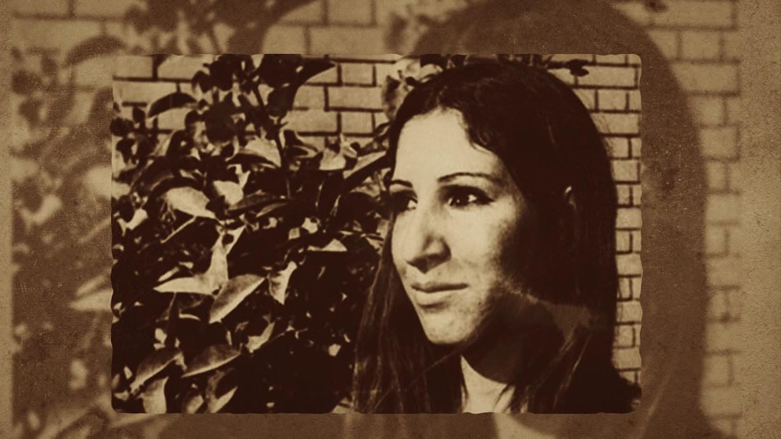Leyla Qasim, the bride of Kurdistan: Honoring the first woman executed in Iraq
From an early age, she was exposed to Kurdish patriotism and political activism

ERBIL (Kurdistan 24) – Over four decades ago, Leyla Qasim’s final request was for a set of Kurdish clothes to be delivered to her prison cell, so she could wear the outfit and be the bride of Kurdistan at her death. On May 12, 1974, the 22-year-old activist was the first woman to be executed in Iraq's history.
Kurds around the world and inside Iraq commemorate Qasim every year on the anniversary of her execution. A remarkable female figure in Kurdish history, she was hanged along with four comrades at the hands of the Baathist regime.
Qasim was a Feyli Kurd born in 1952 in the Khanaqin district of Iraq’s Diyala province. From an early age, she was exposed to Kurdish patriotism and political activism and later joined the Kurdistan Students’ Union and the Kurdistan Democratic Party (KDP).

She was a staunch advocate and fighter for Kurdish political and cultural rights, which had been eroded under consecutive repressive Iraqi regimes. Before her arrest on trumped up charges she was working underground, mobilizing Kurdish revolutionary youth.
A student of Sociology at the University of Baghdad, Qasim worked along with her male comrades in the Iraqi capital until their arrest in the mid-1970s.
In 1970, Kurdish revolutionary leadership, headed by General Mustafa Barzani, signed a peace accord with the then Iraqi government that recognized Kurdish basic political and cultural rights. Under the agreement, the Kurds were granted political autonomy as well as the right to practice their culture, including studying in the Kurdish language.
The accord produced a relative peace between the Kurds and Iraqi authorities for four years before the Baathists withdrew, leading a new round of clashes between Kurdish and Iraqi forces now known as the Second Iraqi-Kurdish War.
Soon after the conflict erupted, the Kurdish revolutionary movement was decimated following the signing of 1975 Algiers Agreement between Iraq and Iran to resolve the neighbors’ outstanding issues. The Iranian monarchy withdrew its support for the Kurdish resistance, resulting in the collapse of Kurdish September Revolution.

‘Bride of Kurdistan’
The Baathists, after the agreement with Tehran, began to rule Iraq with an iron fist and cracked down on the Kurdish revolutionary elements across the country.
Qasim and her friends were arrested and tortured by Iraqi authorities and held in the notorious Abu Ghraib prison, west of the capital. They stayed behind bars for only a week before they were collectively executed on charges of “sabotage and terrorism” – typical charges for those standing against the regime.
When Qasim’s mother paid a visit to her daughter for what would be their last meeting, the soon-to-be-executed activist made her final request: the set of traditional Kurdish clothes.
On the morning of May 12, 1974, the five political activists, including the Bride of Kurdistan, were executed by the regime’s men in Baghdad. Along with Qasim, Azad Sleman Miran, Hassan Hama Rashid, Jawad Hamawandi, and Nariman Fuad Masti were all killed that day.
The executions immediately sparked outrage both locally and internationally as they exposed the regime’s dictatorial tendencies.
Masoud Barzani, the former President of Kurdistan Region (2005-2017) and current KDP leader, in a tweet on Wednesday commemorated the 47th anniversary of Qasim’s execution, describing her as “symbol of resilience” for Kurdish women.
“Ms. Qasim, for the pursuit of her nation, chose death over bowing down to the oppressor,” Barzani said.

The Region’s High Council of Women’s Affairs, likewise, commemorated her anniversary.
Qasim “proved that a dignified death is more valuable than an oppressed life,” the Council wrote.
In the years since her death, Leyla has become a popular name for the daughters of Kurdistan in a sign of remembrance for the activist, and schools, public parks, and projects have been named after her across the Kurdistan Region.
Editing by Joanne Stocker-Kelly
